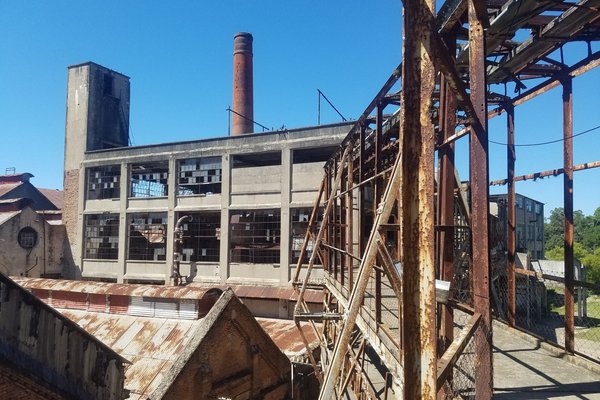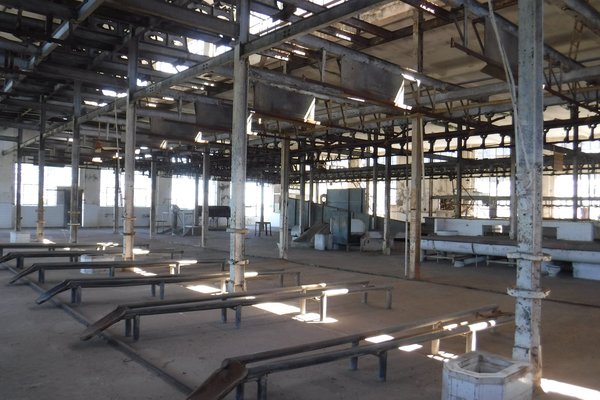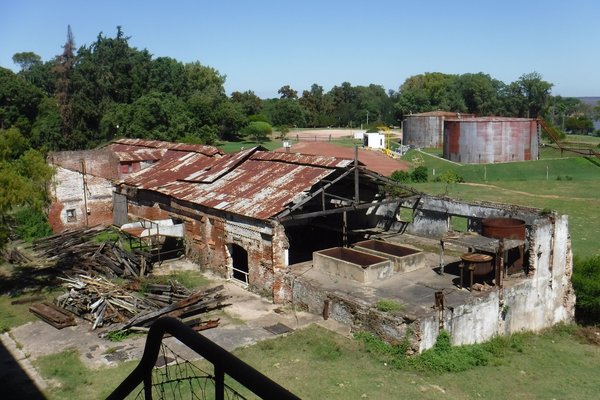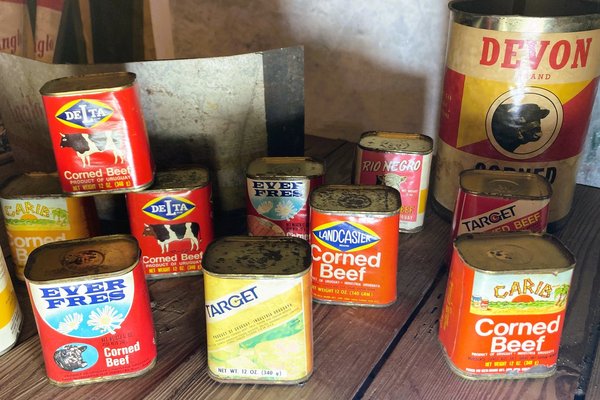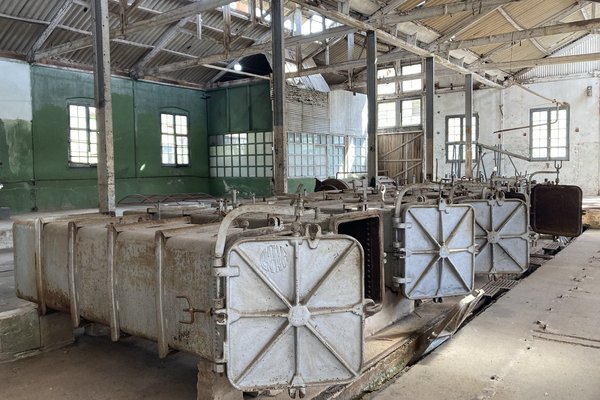Uruguay
Fray Bentos
The Fray Bentos Cultural-Industrial Landscape is a port area shaped for the industrial production of canned and frozen meat.
In 1865, a meat processing and packing plant aimed at the European market was started here on the Uruguay River. The whole process starting from cattle pastures til the shipping of the goods was done on-site. It attracted immigrant workers from over 55 countries. The factory closed down in 1979. Remains include the enormous cold storage building, a tall brick boiler chimney, workers’ housing, holding pens and the slaughter yard.
Community Perspective: it’s a fascinating and extensive site, with a modern visitor center and a museum. Several tours are on offer to explore restricted parts such as the manager’s residence or the factory plant.
Site Info
Official Information
- Full Name
- Fray Bentos Cultural-Industrial Landscape (ID: 1464)
- Country
- Uruguay
- Status
-
Inscribed 2015
Site history
History of Fray Bentos
- 2015: Inscribed
- Inscribed
- Type
- Cultural
- Criteria
- ii
- iv
Links
- UNESCO
- whc.unesco.org
- Official
-
- rionegro.gub.uy — Museo de la Revolución Industrial
- Related
-
- telegraph.co.uk — Why has a Fray Bentos factory been given World Heritage status?
All Links
UNESCO.org
- whc.unesco.org — whc.unesco.org/
Official Website
- rionegro.gub.uy — Museo de la Revolución Industrial
Related Resources
- telegraph.co.uk — Why has a Fray Bentos factory been given World Heritage status?
Community Information
- Community Category
- Secular structure: Factories and industry
- Cultural Landscape: Relict
Travel Information
WHS Commandments Stars
Recent Connections
-
Named after individual people
"The name “Fray Bentos” entails a certa… -
WHS Commandments Stars
Scores on all criteria, although #9 (tr… -
Universities
Fray Bentos Technical University is bei…
Connections of Fray Bentos
- Geography
-
-
Río de la Plata Basin
On the Uruguay River -
On National Border
Border with Argentina
-
- Trivia
-
-
Built or owned by Germans
Originally founded and built by the German "Liebig Extract of Meat Company" in 1863. -
Built or owned by British
Originally founded and built by the German "Liebig Extract of Meat Company" in 1863. It was acquired by the UK Vestey Group in 1924 when a new plant was built extending the product range from meat extract and corned beef to frozen meat. The factory was renamed "Frigorifico Anglo del Uruguay" also known as "El Anglo". "Small brick houses with thick walls running along the river's edge in Fray Bentos form the "Barrio Anglo," a city-within-a-city where meatpacking workers lived that featured a hospital, a school, a social club and a football squad" (Wiki)
-
- World Heritage Process
-
-
Perfect Inscriptions
2015 -
Upstream process
Pilot project -
Industrial Landscapes
Official name as inscribed is "Fray Bentos Industrial Landscape". The AB also describes it as a "Cultural Landscape" and comments "The Preface to the nomination dossier points out that the Latin American and Caribbean Group GRULAC agreed that Fray Bentos Cultural-Industrial Landscape was the most representative of a great part of the historical development process in the American continent"
-
- Human Activity
-
-
Human Migration
Most workers and residents were immigrants from 60 different countries -
Locations for playing sport
historical tennis court at the residential area -
Cremation
cremation of animal remains at the factory -
Company town
Barrio Anglo -
Golf Courses
Fray Bentos Golf ClubSee es.wikipedia.org
-
River Ports
At the Uruguay River -
Thanatourist destination
slaughter house
-
- Constructions
- Timeline
-
-
Built in the 19th Century
From 1865 to 1924 Giebert developed the Liebig Extract of Meat Company Limited (LEMCO) producing meat extract and corned beef (AB ev)
-
- Science and Technology
-
-
Steam technology
"Power was provided in the Boiler Room by oil-fuelled, water-tube steam generators, four dating from 1906 and six from 1922." (AB ev) -
Botanical Gardens
at the Casa Grande -
Scientific Developments
first place where beef extract was industrially applied -
Universities
Fray Bentos Technical University is being built on the factory grounds -
Historic Laboratories
Liebig laboratory - The chemical laboratory in Fray Bentos, Río Negro, Uruguay, is particularly special since it is a Research and Development Laboratory and not an Academic Laboratory
-
- Visiting conditions
-
-
WHS Commandments Stars
Scores on all criteria, although #9 (translations) could be improved to add more options in English
-
- WHS Names
-
-
Named after individual people
"The name “Fray Bentos” entails a certain kind of uncertainty; nevertheless, it is generally agreed that it might derive from the surname of a Friar Bentos. It seems that this hermit religious monk settled down in the area today called Rincón de Haedo, where there is now a village bearing the same name. According to historians, he founded a settlement in this place which had to be abandoned in two opportunities due to the violent Indian raids led by a native called Iramundi. Historical versions lead us to justify the subsequent self-reclusion of the religious man in a grotto found in the area of Caracoles Creek, to the South of the site where the City of Fray Bentos stands today" (The town was originally created as "Villa Independencia" in 1859)
-
News
No news.
Recent Visitors
Visitors of Fray Bentos
- Adrian Turtschi
- Alejandro Lau
- Ammon Watkins
- Assif
- Atila Ege
- Christoph
- Cyberczar
- del
- Els Slots
- Fan Yibo
- Filip Murlak
- Frédéric M
- Harry Mitsidis
- hotpickle
- Jawnbeary
- João Aender
- Joel on the Road
- Loic Pedras
- Luis Filipe Gaspar
- nan
- Nihal Ege
- Patrik
- Philipp Peterer
- Roman Bruehwiler
- Shandos Cleaver
- Solivagant
- Stanislaw Warwas
- Tevity
- Thomas Buechler
- Thomas van der Walt
- Timonator
- Veronica
- Wojciech Fedoruk
- Xiquinho Silva
- zfish
- Zoë Sheng
Community Reviews
Show full reviews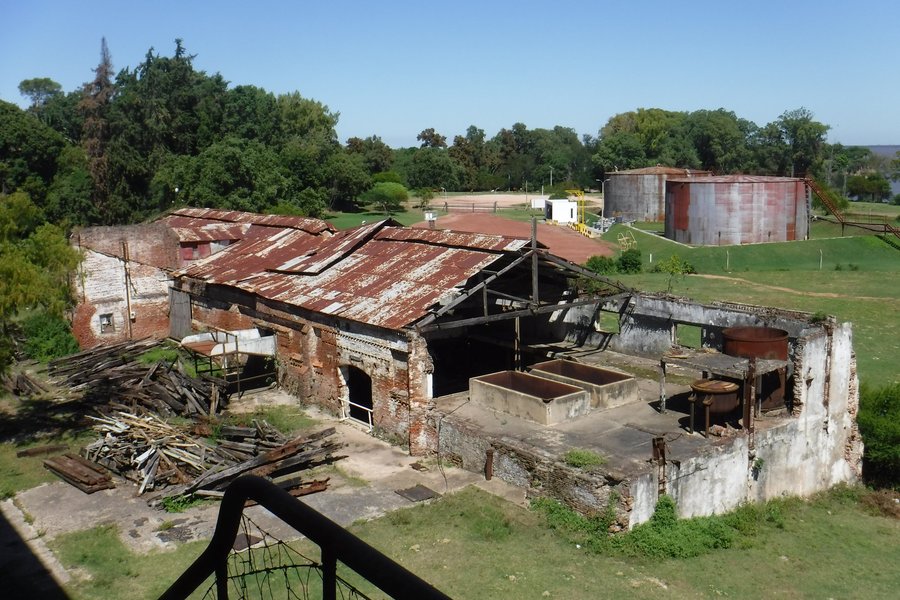
I visited Fray Bentos in March 2022. It is a unique site among the world heritage properties. Indeed, it is a slaughterhouse and an industrial complex derived from the processing of beef. Previous reviewers have already explained well the importance of this complex and the immense influence it had on Uruguay and the rest of the world, mainly through the Oxo cubes consumed by both soldiers and great explorers. I was not familiar with this industry and its legacy before my visit, and I found it really fascinating.
I reached Fray Bentos from Argentina, from Gualeguaychu (a city I had reached from Posadas on an overnight bus). The bus connection between Gualeguaychu and Fray Bentos described by Nan was not back to normal in March 2022. So I took a cab from the Gualeguaychu bus station to the border. I then tried to hitch a ride to Fray Bentos, but finally got there on foot before anyone picked me up (it was only about 10 kilometers to my hotel and there were very few cars crossing the border at that early hour). I also walked to the Bario Ingles from the center of Fray Bentos.
Shandos describes the opening hours and the schedule of guided tours very well in her review (fortunately, because I forgot to note those details). However, it was very difficult to find this information up to date in March 2022. It should be noted that Argentina and Uruguay had only reopened their borders to tourists a …
Keep reading 0 comments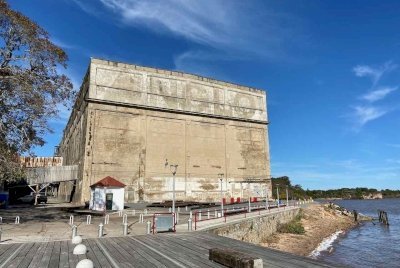
Former industrial sites can be divisive World Heritage Sites. I'm not against industrial sites (partially as they can be interesting to photograph), although a multitude of mining and planned town sites being inscribed can be monotonous. Fray Bentos though stands out as a unique and key site for international meat exports (stock cubes and canned corned beef). In the modern era, you forget how big a development these were. The products from this factory were one of the most important exports of South America, shipped to Europe and used on expeditions of exploration and to supply armies in both WWI and WWII.
The site itself could do with an up-to-date website. Google Maps indicates it's open Thursday to Sunday, but the sign at the entry states it's open Tuesday to Sunday, only closed on Mondays except holidays, with free entry on Tuesday. We had planned to go on the twice daily tour (10am and 3pm, except on rainy or stormy days), but the lady at the ticket counter suggested we skip as we can't speak Spanish. Two of the participants on the tour later volunteered to translate for us, but we decided to still skip.
The tour is required to enter parts of the former factory, but with our museum ticket we saw both floors of the museum (rather adhoc and mainly in Spanish), plus wandered parts of the site. Our favourite part were the large photos dating back to the 1930s (look for the many workers without …
Keep reading 0 comments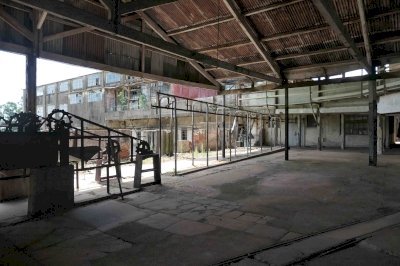
Having little idea of what I will encounter I took a bus from Salto, Uruguay to Fray Bentos which I planned as a stop on the way to Montevideo. After 4,5 hours I arrived in Fray Bentos at about 10 in the morning. I took my whole backpack to the street corner opposite of bus terminal as there are no lockers in the terminal. After 45 minutes, at about quarter to 11 a.m., a public bus full of pensioners arrived and took me in a huge detour in 35 minutes to Barrio Anglo which is named after the factory and equals the WHS. Near to the former factory gate there is a newly built air conditioned visitor center with clean lavatory, small lockers, fancy information tablets, timelines and screens and some helpful employees that informed me nicely about what to see and later also called me a taxi back to the terminal. I placed my backpack on top of the lockers trusting the employees that it was safe and made my way to the Museum of the Industrial Revolution which is located in an old factory building next to the landmark fridge storage building. Despite the name the museum covers only the history and background information about the factory and not so much about anything else. I found the museum really interesting and together with my good friend Google Translator I managed to understand a lot of the Spanish on the signs. Most interesting I found the fact that the …
Keep reading 0 comments
Fray Bentos is situated at the first river crossing between Argentina and Uruguay of Rio Uruguay. The main town on the Argentinian side is Gualeguaychu. And that’s where I found myself stuck after my bus from Buenos Aires ran late. Again. As all other busses in Argentina. So I missed my connection. Instead I ended up hitchhiking across the border.
The town itself is a somewhat sleepy backwater nowadays. But this wasn’t always the case. While I was making my way to Barrio Ingles (English Quarter) I crossed several nice squares and buildings. For instance, Fray Bentos has a theater, impressive for a town this size. The buildings could use some paint, but they point to the high time of the town when the meat processing plant was active.
The world heritage itself, the Barrio Ingles with the meat processing plant, is on the edge of town on the river for shipment. The plant used to supply the UK with food, the name being synonymous with corned beef. Fray Bentos was especially important during both World Wars. Operations were moved to the UK around 1960 and it’s astonishing to see how quickly the plant fell into disrepair. The brand, though, is still in use in the UK, most people not knowing what Fray Bentos actually refers to.
If you are looking for a great photo opportunity, Fray Bentos will deliver. There are plenty of great shots of ruins and decay to be taken. In addition you have …
Keep reading 0 comments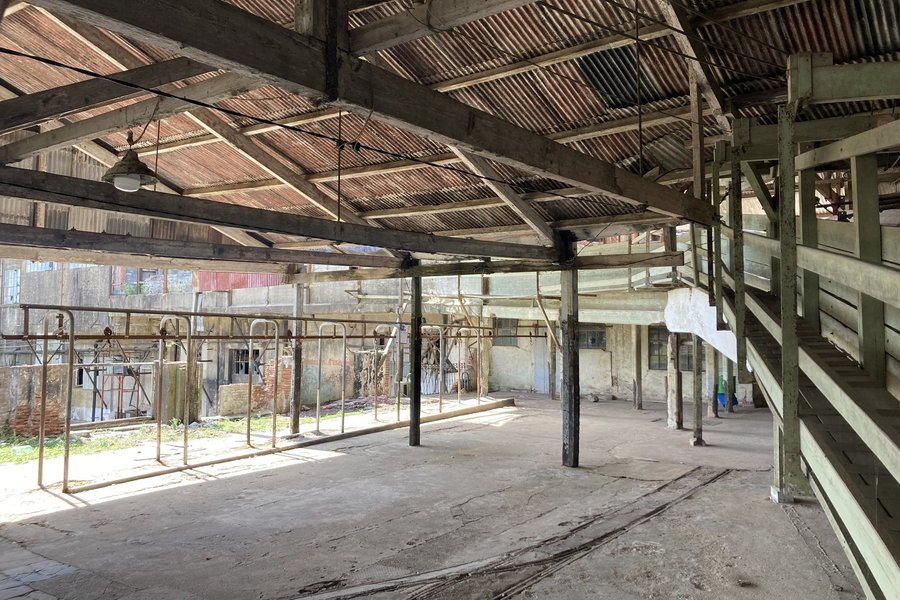
When I first made up my mind to use my long holiday in Uruguay visiting my parents in law to visit Fray Bentos I couldn't resist the annoying thought of visiting a slaughterhouse as a vegetarian. It is still a part cultural history, I told myself. Thankfully, however, Fray Bentos has a lot to it other than its indispensable share of death toll. The city is situated about 300 kms or four hours drive from Montevideo (the Uruguayan capital) and about the same distance from Buenos Aires. It is next to the closest bridge connecting the two countries. The city isn't too big and you can easily walk from the city centre to Barrio Anglo which is the historic company town.
The cultural landscape includes not only the factory, but its adjacent buildings and the living quarters. You can book a guided tour to Casa Grande, which was a typical manager residence, or to the factory complex (we did both). You can also join a guided bike tour through the entire residential area including the historic tennis court and golf course. At the factory there is a little museum, but visiting it would certainly not suffice for an overview of the complex. The factory is very large and includes (apart from the slaughter room) several machine rooms, offices and a lab, all of which are open to visitors. Outside you can see the water pump and some cranes at the historic pier. The complex was very international at the …
Keep reading 0 comments
